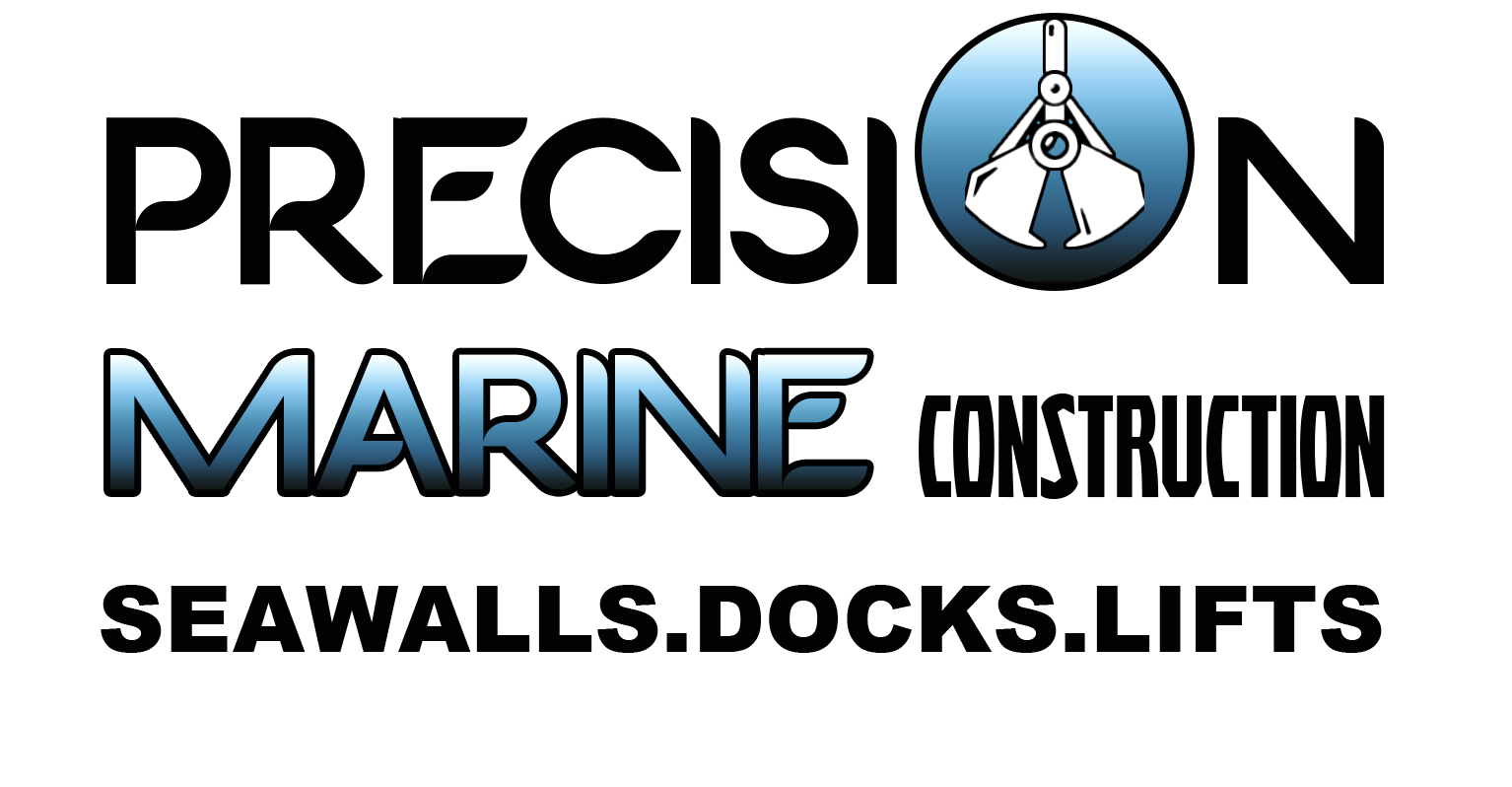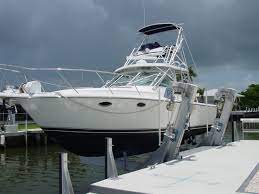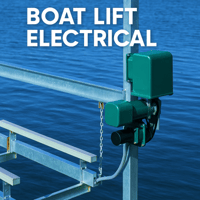Types of Boat Lifts
A boat lift is designed to secure a boat over the water, either at a private dock or in a marina.
Storing a boat on a lift offers several advantages over being moored in the water. The first is safety. You never have to worry about a line coming loose, the boat repeatedly hitting the dock by wakes, a storm, or the boat sinking off the dock if the bilge pump fails. The opportunity for marine growth is limited when the boat is kept out of the water, so you may not need to paint the bottom. It also protects the boat and drive train from corrosion, especially in saltwater. A boat stored in a lift is less prone to hull damage. So, a lift can help maintain the boat's value in the long term. A boat lift equipped with a roof or sunshade will help keep the boat clean and protected from fading in the sun. Keeping a boat in the dock on a lift is much more convenient than launching it from a trailer before each outing. Here is some basic information about the most common types of boat lifts. Capacity ranges from 1,000 pounds to over 25,000 pounds. The boat's weight must include fuel, water, and the equipment carried on board.
There are other factors to consider when choosing a lift;
- Length and beam of the boat
- The water depth at which the lift will be installed, Regardless of whether the bottom is soft or hard.
- Boat lifts installed in salt water should be made of corrosion-resistant materials and use stainless steel fasteners.
- A professional boat lift installer will inspect your site and boat and recommend the best lift for your situation. Also, be aware of local regulations or property guidelines regarding docking and boat lifts.
Four different types of boat lifts to consider;
- In-ground lift: an in-ground lift is installed next to the dock and is supported by its legs that rest on the ground. Installing and securing the lift can be challenging if the ground is soft or uneven. The lift can be raised and lowered manually by turning a large wheel or by an electric motor, which requires power at the dock. The more expensive elevators use hydraulic systems to raise and lower the boat, unlike those that use pulleys and cables to be faster and quieter.
- Post-mounted boat lift: A boat lift attaches directly to a dock or fixed posts. This, of course, requires a dock or pole structure strong enough to support the weight of the lift and boat and often requires the installation of custom poles. These hoists generally require electrical power to operate.
- Floating boat lift: holds the boat between air-filled chambers made of metal or plastic. The chambers are flooded and sink below the surface to free the boat and remain submerged while the boat is in use. When returning, you place the boat between the chambers, and the electric pumps displace the water with air, the chambers float, and the boat rises above the water surface. Float lifts are primarily found in larger marinas with floating docks and freshwater reservoirs where lake levels fluctuate during the season.
- The seawall or dock-mounted elevator lift: Two I-beams are submerged into the waterway bottom. The beams are generally installed at a 20% angle. A cradle system with cantilevered arms supports the boat as it travels up and down the two main I-beams. The elevator lift is usually recommended for narrow waterways.
For more information or to schedule a free estimate, contact the professionals at Precision Marine Construction at 941.924.6044 for any questions or concerns regarding your marine needs.





Blog comments